Abstract
A neuropsychiatric disorder known as catatonia is characterized by a
variety of behavioral, cognitive, and motor abnormalities. Although there is currently a treatment, the neurobiological mechanisms underlying catatonia
remain poorly understood, and existing models fail to capture the full spectrum of symptoms. Recent studies link the development of catatonia to
GABAergic dysfunction, more especially, disturbances in GABA-A receptor signaling. This work seeks to fill important knowledge gaps by using
Drosophila melanogaster as a model organism to examine the part that GABAergic disruption plays in catatonia-like symptoms. Using ashwagandha
extract, a GABA-A receptor antagonist, the research explores how altered GABAergic neurotransmission affects behaviors fundamental to the syndrome,
such as locomotion, sensory responsiveness, and social interaction. The study makes use of Drosophila melanogaster's short life cycle, behavioral
observability, and genetic tractability. To make sure of constant exposure, experimental groups were given ashwagandha extract through food
supplementation, while wild-type flies will act as the control group. The impact of GABAergic dysfunction will be assessed using a set of behavioral
tests. Using tracking software, a locomotion test assessed changes in motor function by measuring parameters like total distance traveled and
movement frequency. A chemosensory experiment evaluated sensory responsiveness and determined how the flies responded to chemical stimuli, such as
repellents. Lastly, by watching whether flies exhibit increased isolation or clustering tendencies in observation spaces, a clustering assay assessed
social behaviors. To compare the experimental and control groups and determine if ashwagandha extract-induced GABA-A receptor antagonism causes
catatonia-like symptoms in Drosophila, the data from these assays will be statistically examined. This study will add to our understanding of the
GABAergic contributions to catatonia by finding certain behavioral irregularities overall laying the groundwork for future research on the
neurochemical basis of the condition.
If you would like to read more, click here to read my research proposal: Research Proposal
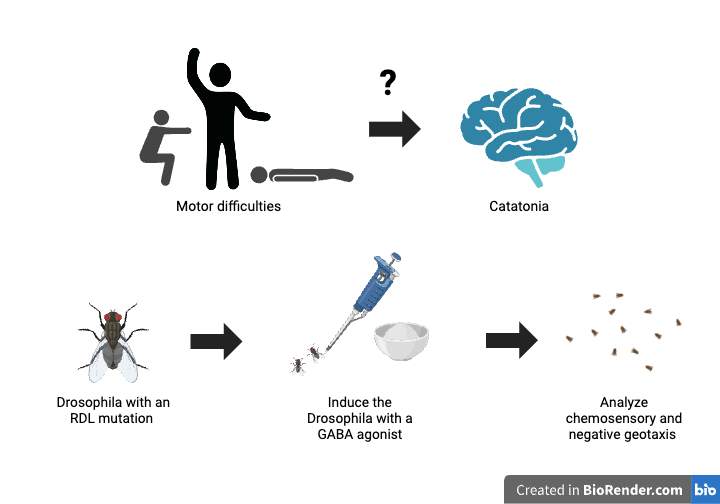
Research Question
How does Ashwagandha exposure influence locomotion and chemosensory responses in Drosophila melanogaster, as a model for understanding GABAergic dysfunction in catatonia?
Hypothesis
Ashwagandha exposure will enhance locomotion and chemosensory responses in Drosophila melanogaster with reduced GABAergic activity.
Background
Methodology
Results
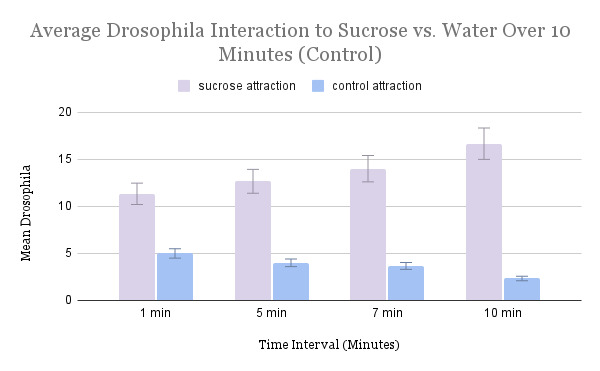
Graph 1: This graph shows the average attraction of wild-type Drosophila to sucrose compared to water over a 10-minute period. As expected for the control group, Drosophila exhibited a stronger attraction to sucrose, demonstrating normal chemosensory behavior. The consistent attraction to sucrose over time indicates typical sensory processing, supporting the reliability of the control group in assessing Drosophila's natural response to sucrose.
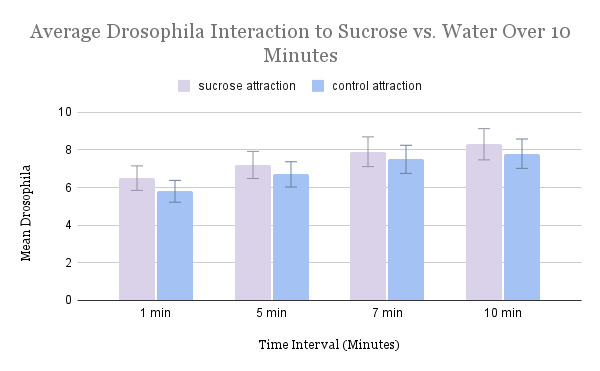
Graph 2: This graph shows the average attraction to sucrose versus water over a 10-minute period in Drosophila with a mutation in the rdl gene, leading to reduced GABA levels. Unlike the control group, these GABA-deficient flies exhibited a significantly decreased attraction to sucrose, indicating impaired sensory processing. The difference in attraction between sucrose and water highlights the sensory deficits caused by the GABA mutation, supporting the use of rdl mutant Drosophila as a model for studying catatonia-like symptoms.
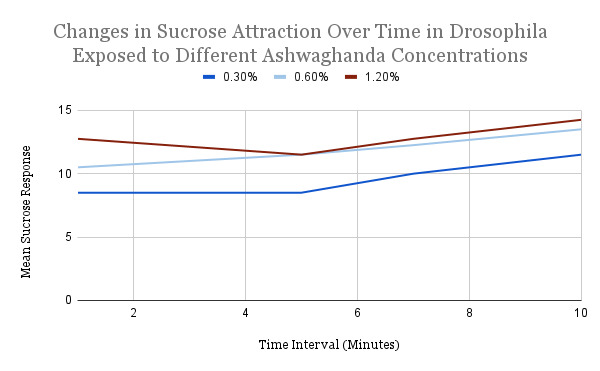
Graph 3: This line graph shows the change in sucrose attraction of Drosophila with the rdl mutation (low GABA) when exposed to different concentrations of Ashwagandha. The graph demonstrates an increasing trend in sucrose attraction as Ashwagandha concentration rises, indicating a potential improvement in sensory function and mitigation of catatonia-like symptoms in GABA-deficient flies.
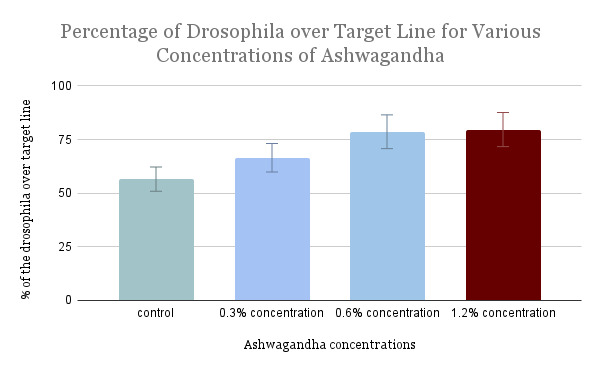
Graph 4: This is a bar graph representing the percentage of Drosophila with the rdl mutation (low GABA) that successfully crossed the target line in the negative geotaxis assay at different concentrations of Ashwagandha. The results show a trend of increased climbing ability with higher Ashwagandha concentrations, suggesting a potential improvement in motor function and alleviation of catatonia-like symptoms in GABA-deficient flies.